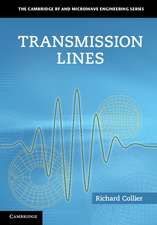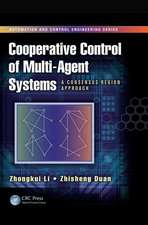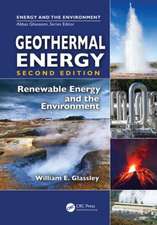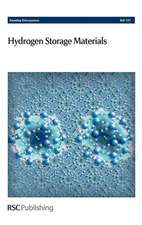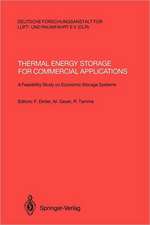International Energy Agency/Small Solar Power Systems Project: The IEA, SSPS High Flux Experiment: Testing the Advanced Sodium Receiver at Heat Fluxes up to 2.5 MW/m2
Editat de Wolfgang Schiel, Michael A. Geyer, Ricardo Carmonaen Limba Engleză Paperback – 3 dec 1987
Preț: 383.12 lei
Nou
Puncte Express: 575
Preț estimativ în valută:
73.32€ • 76.26$ • 60.53£
73.32€ • 76.26$ • 60.53£
Carte tipărită la comandă
Livrare economică 12-26 aprilie
Preluare comenzi: 021 569.72.76
Specificații
ISBN-13: 9783540182245
ISBN-10: 3540182241
Pagini: 220
Ilustrații: XVI, 202 p.
Dimensiuni: 152 x 229 x 12 mm
Greutate: 0.3 kg
Ediția:1987
Editura: Springer Berlin, Heidelberg
Colecția Springer
Locul publicării:Berlin, Heidelberg, Germany
ISBN-10: 3540182241
Pagini: 220
Ilustrații: XVI, 202 p.
Dimensiuni: 152 x 229 x 12 mm
Greutate: 0.3 kg
Ediția:1987
Editura: Springer Berlin, Heidelberg
Colecția Springer
Locul publicării:Berlin, Heidelberg, Germany
Public țintă
ResearchCuprins
1. High Flux Experiment Test Program.- 1.1 The Advanced Sodium Receiver at SSPS-CRS.- 1.2 Heliostat fields available at IEA-SSPS.- 1.3 Achievable High Flux Operating Conditions.- 1.4 The Test matrix for the High Flux Experiment.- 1.5 The High Flux Experiment Test Program.- 1.6 Participants and Work Packages.- 1.7 References.- 2. Asr Thermal and Stress Analysis for 2.5 Mw/M2 Peak Flux.- 2.1 Introduction.- 2.2 Thermal Analysis.- 2.3 Evaluation of ASR residual lifetime before High Flux Testing.- 2.4 Stress Analysis.- 2.5 Conclusions.- 2.6 References.- 3. Metallographic Analysis of the Asr Receiver Tubes.- 3.1 Introduction.- 3.2 Results of investigation.- 3.3 Assessment of the investigation findings.- 4. Asr Tube Deformation Measurements.- 4.1 Introduction.- 4.2 Method of Measurement.- 4.3 Results.- 4.4 Conclusions.- 5. Asr Absorptance Measurements.- 5.1 Introduction.- 5.2 Instrument characteristics.- 5.3 Methods for estimating absorptance distribution.- 5.4 Results.- 5.5 Conclusion.- 6. Heliostat Selection for Certain Peak/Power Levels.- 6.1 Introduction.- 6.2 Input Data.- 6.3 Output Data.- 6.4 Results.- 6.5 References.- 7. Determination of Feasible Peak and Power Levels.- 7.1 Introduction.- 7.2 Prediction of Irradiance.- 7.3 Determination of the feasible peak/power levels.- 7.4 Conclusions.- 7.5 References.- 8. Evaluation and Qualification of the HFD Bar.- 8.1 Introduction.- 8.2 Description of the HFD Measurement System.- 8.3 Repeatability of the HFD Bar Measurements.- 8.4 Comparison of HFD bar measurements and HELIOS calculations.- 8.5 Conversion to the ASR Plane.- 8.6 Conclusions.- 8.7 References.- 9. Receiver Thermodynamics Under High Flux Conditions.- 9.1 Introduction.- 9.2 Numerical simulation.- 9.3 Comparison Calculation-Measurement.- 9.4 High Flux Experiment.- 9.5Conclusions.- 9.6 References.- 10. ASR Simulation with the ‘Theresa’ Code.- 10.1 Introduction.- 10.2 Modifications of THERESA.- 10.3 Results.- 10.4 Conclusions.- 11. ASR Surface Temperature Measurements.- 11.1 Introduction.- 11.2 Measurement method and hardware.- 11.3 Presentation and Discussion of the Results.- 11.4 Conclusions.- 11.5 References:.- 12. Advanced Sodium Receiver Losses.- 12.1 Introduction.- 12.2 Optical losses.- 12.3 Thermal Losses.- 12.4 Procedure for calculating the losses during normal operation.- 12.5 References.- 13. ASR Loss Tests by Complementary Heliostat Field Configurations.- 13.1 Evaluation Method.- 13.2 External Receiver Thermal Loss.- 13.3 Part-Load Performance.- 13.4 Thermal Loss Predictions (Receiver Math Model).- 13.5 Conclusions.- 13.6 References.- 14. Receiver Efficiency Evaluation Based on Recorded Das Data and Helios Calculations.- 14.1 Introduction.- 14.2 Methods.- 14.3 Results.- 14.4 Power Distribution.- 14.5 Conclusions.- 14.6 References.- 15. ASR High Flux Experiment Results and Conclusions.- 15.1 Introduction.- 15.2 Major achievements.- 15.3 Results.- 15.4 Conclusions.- 15.5 References.- Appendix A. Tables of Infrared Measurements.- Appendix B. List of Illustrations.- Appendix C. List of Tables.




